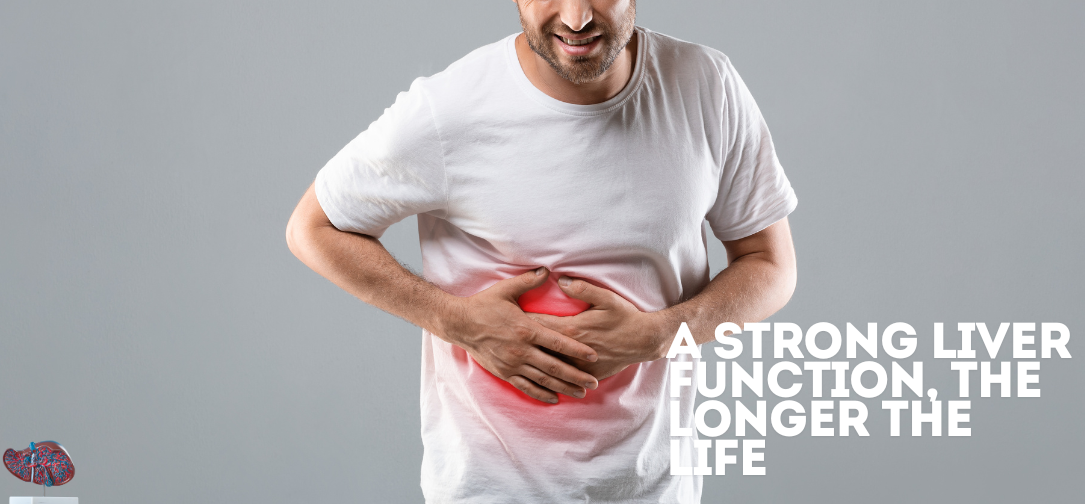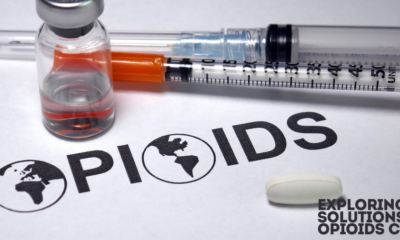Healthcare
Understanding Liver Disease: Causes, Symptoms, and Treatment Options

The liver is a vital organ in the human body, performing numerous functions that are essential for life. It plays a key role in metabolism, detoxification, protein synthesis, and the regulation of hormones. However, the liver is susceptible to various diseases that can severely affect its functioning, leading to serious health complications. Liver diseases encompass a range of conditions, from fatty liver disease and hepatitis to cirrhosis and liver cancer. Understanding the causes, symptoms, and treatment options for liver disease is crucial for both prevention and management.
This article will provide an in-depth examination of liver diseases, exploring their underlying causes, associated symptoms, and the various treatment options available. By delving into the complexities of liver disease, this piece aims to raise awareness and enhance understanding of these conditions that affect millions of people worldwide.
Anatomy and Function of the Liver
The liver is the largest internal organ and gland in the human body, weighing about 1.5 kilograms (3.3 pounds) in an average adult. It is located in the upper right quadrant of the abdomen, beneath the diaphragm and above the stomach. The liver is divided into two primary lobes, which are further subdivided into smaller lobules, each containing hepatocytes, the main functional cells of the liver.
Key Functions of the Liver:
- Metabolism: The liver is central to the metabolism of carbohydrates, fats, and proteins. It stores glucose as glycogen and releases it when needed, converts excess carbohydrates and proteins into fatty acids and triglycerides, and processes amino acids for protein synthesis.
- Detoxification: One of the liver’s most vital roles is detoxifying the body by metabolizing and excreting harmful substances such as drugs, alcohol, and environmental toxins.
- Bile Production: The liver produces bile, a substance essential for the digestion and absorption of fats in the small intestine.
- Protein Synthesis: The liver synthesizes various proteins, including albumin, which helps maintain blood volume and pressure, and clotting factors that are crucial for blood coagulation.
- Immune Function: The liver contains a large number of immune cells that help in filtering out pathogens from the blood and plays a role in the body’s immune response.
Given its multitude of functions, any impairment in liver function can lead to serious consequences, affecting multiple systems in the body.
Types of Liver Disease
Liver diseases are a broad category of conditions that damage the liver and impair its ability to function properly. They can be broadly categorized into several types:
1) Non-Alcoholic Fatty Liver Disease (NAFLD)
NAFLD is the most common liver disease worldwide and is closely associated with obesity, type 2 diabetes, and metabolic syndrome. NAFLD is characterized by the accumulation of excess fat in the liver cells that is not due to alcohol consumption. It can range from simple steatosis (fat accumulation without inflammation) to non-alcoholic steatohepatitis (NASH), which involves inflammation and can progress to cirrhosis and liver cancer.
2) Alcoholic Liver Disease (ALD)
Chronic alcohol consumption is a leading cause of liver disease, resulting in a spectrum of liver conditions collectively referred to as alcoholic liver disease. ALD can range from fatty liver (hepatic steatosis) to alcoholic hepatitis (inflammation of the liver) and alcoholic cirrhosis (scarring of liver tissue). The risk of ALD increases with the quantity and duration of alcohol intake.
3) Viral Hepatitis
Viral hepatitis is an inflammation of the liver caused by viruses, primarily hepatitis A, B, C, D, and E. Hepatitis B and C are the most serious forms, potentially leading to chronic liver disease, cirrhosis, and liver cancer. These viruses are transmitted through different routes, including contaminated food or water (hepatitis A and E), blood and body fluids (hepatitis B and C), and co-infection with hepatitis B (hepatitis D).
4) Cirrhosis
Cirrhosis is a late-stage liver disease characterized by scarring (fibrosis) of the liver tissue. It can result from various liver conditions such as chronic hepatitis, ALD, and NAFLD. In cirrhosis, normal liver tissue is replaced by scar tissue, which obstructs blood flow through the liver and impairs its function. Cirrhosis can lead to severe complications, including liver failure, portal hypertension, and hepatocellular carcinoma (liver cancer).
5) Liver Cancer
Primary liver cancer, or hepatocellular carcinoma (HCC), often arises as a complication of chronic liver diseases such as hepatitis B, hepatitis C, and cirrhosis. Liver cancer is one of the leading causes of cancer-related deaths worldwide, with a high mortality rate due to late diagnosis and limited treatment options.
6) Autoimmune Liver Diseases
Autoimmune liver diseases occur when the body’s immune system mistakenly attacks its own liver cells. These include autoimmune hepatitis, primary biliary cholangitis (PBC), and primary sclerosing cholangitis (PSC). Autoimmune liver diseases can lead to chronic inflammation, fibrosis, and eventually cirrhosis if left untreated.
7) Genetic Liver Diseases
Genetic disorders such as hemochromatosis (iron overload), Wilson’s disease (copper accumulation), and alpha-1 antitrypsin deficiency can cause liver disease by disrupting the normal metabolic processes in the liver. These conditions are often diagnosed through genetic testing and can lead to chronic liver disease and cirrhosis if not managed properly.
Causes of Liver Disease
Liver diseases can result from a variety of causes, which may act alone or in combination to impair liver function. The primary causes of liver disease include:
- Excessive Alcohol Consumption
Excessive and chronic alcohol consumption is a well-established cause of liver disease. Alcohol is metabolized in the liver, where it can produce toxic byproducts that damage liver cells, leading to inflammation, fat accumulation, and scarring. Prolonged alcohol abuse can result in conditions such as alcoholic fatty liver, alcoholic hepatitis, and cirrhosis.
- Viral Infections
Viral infections, particularly hepatitis B and C, are major causes of liver disease globally. These viruses can cause both acute and chronic liver infections, leading to progressive liver damage, cirrhosis, and liver cancer. Hepatitis B is preventable through vaccination, while hepatitis C can be treated with antiviral medications.
- Obesity and Metabolic Syndrome
Obesity and metabolic syndrome, which includes conditions such as type 2 diabetes, hypertension, and dyslipidemia, are significant risk factors for non-alcoholic fatty liver disease (NAFLD). Fat accumulation in the liver can lead to inflammation and scarring, potentially progressing to non-alcoholic steatohepatitis (NASH) and cirrhosis.
- Genetic Factors
Certain genetic mutations can predispose individuals to liver diseases such as hemochromatosis, Wilson’s disease, and alpha-1 antitrypsin deficiency. These conditions disrupt the liver’s normal metabolic processes, leading to liver damage, inflammation, and fibrosis.
- Autoimmune Disorders
Autoimmune liver diseases occur when the immune system targets liver cells, leading to inflammation and liver damage. The exact cause of autoimmune liver diseases is not well understood, but they are believed to result from a combination of genetic and environmental factors.
- Drug-Induced Liver Injury
Certain medications, herbal supplements, and toxins can cause liver damage, known as drug-induced liver injury (DILI). Some drugs that are commonly associated with liver toxicity include acetaminophen (in high doses), statins, antibiotics, and nonsteroidal anti-inflammatory drugs (NSAIDs). The risk of DILI can vary based on genetic factors, dosage, and duration of use.
Symptoms of Liver Disease
Liver disease can manifest in a variety of ways, and symptoms often depend on the specific condition and its severity. In many cases, liver disease may not produce noticeable symptoms in its early stages. However, as the disease progresses, symptoms may become more pronounced.
Common Symptoms of Liver Disease:
Fatigue: Persistent tiredness is a common symptom of liver disease, particularly in chronic conditions like hepatitis and cirrhosis.
Jaundice: Yellowing of the skin and eyes, known as jaundice, occurs due to the accumulation of bilirubin, a byproduct of red blood cell breakdown that is normally processed by the liver.
Abdominal Pain and Swelling: Pain or discomfort in the upper right abdomen may indicate liver inflammation or enlargement. Ascites, the accumulation of fluid in the abdomen, is a common complication of cirrhosis.
Nausea and Vomiting: Liver dysfunction can affect digestion and cause nausea, vomiting, and loss of appetite.
Dark Urine and Pale Stools: Changes in urine color (dark) and stool color (light or pale) can result from liver dysfunction affecting bile production and excretion.
Itchy Skin: Chronic liver disease can cause pruritus (itchy skin) due to bile salt accumulation in the skin.
Easy Bruising and Bleeding: Impaired production of clotting factors by the liver can lead to easy bruising and bleeding tendencies.
Confusion and Cognitive Changes: Hepatic encephalopathy, a condition characterized by confusion, altered consciousness, and cognitive changes, can result from the buildup of toxins in the brain due to impaired liver function.
Spider Angiomas: Small, spider-like blood vessels visible under the skin can indicate liver disease, particularly cirrhosis.
It is important to note that these symptoms can also be associated with other medical conditions, so a thorough evaluation by a healthcare provider is necessary for an accurate diagnosis.
Diagnosis of Liver Disease
Diagnosing liver disease involves a combination of medical history, physical examination, laboratory tests, imaging studies, and sometimes liver biopsy.
1) Medical History and Physical Examination
A detailed medical history, including information about alcohol consumption, medication use, family history of liver disease, and exposure to risk factors for viral hepatitis, is crucial. A physical examination may reveal signs such as jaundice, abdominal tenderness, hepatomegaly (enlarged liver), or ascites.
2) Laboratory Tests
Liver Function Tests (LFTs): LFTs measure levels of liver enzymes (ALT, AST), bilirubin, and proteins (albumin). Elevated liver enzymes may indicate liver inflammation or damage, while abnormal bilirubin and protein levels can suggest impaired liver function.
Complete Blood Count (CBC): A CBC can reveal anemia, low platelet count, or other abnormalities associated with liver disease.
Viral Hepatitis Serology: Blood tests to detect antibodies or antigens for hepatitis A, B, C, D, and E help diagnose viral hepatitis infections.
Autoimmune Markers: Tests for specific antibodies (e.g., antinuclear antibody [ANA], antimitochondrial antibody [AMA]) can help diagnose autoimmune liver diseases.
3) Imaging Studies
Ultrasound: Abdominal ultrasound is a non-invasive imaging test that can assess liver size, texture, and the presence of fatty infiltration, cysts, or tumors.
CT Scan and MRI: Computed tomography (CT) and magnetic resonance imaging (MRI) provide more detailed images of the liver and are useful for detecting masses, cirrhosis, and vascular abnormalities.
FibroScan: This non-invasive test uses ultrasound technology to measure liver stiffness, which helps assess the extent of fibrosis or cirrhosis.
4) Liver Biopsy
A liver biopsy involves obtaining a small tissue sample from the liver for microscopic examination. It remains the gold standard for diagnosing certain liver diseases, assessing the degree of inflammation, and determining the extent of fibrosis.
Treatment Options for Liver Disease
The treatment of liver disease depends on the underlying cause, the extent of liver damage, and the presence of complications. Treatment strategies may include lifestyle modifications, medications, minimally invasive procedures, and surgery.
1) Lifestyle Modifications
Alcohol Cessation: For individuals with alcoholic liver disease, complete cessation of alcohol intake is crucial to prevent further liver damage and improve prognosis.
Weight Loss and Diet: Weight loss through a healthy diet and regular exercise is recommended for patients with non-alcoholic fatty liver disease (NAFLD) to reduce liver fat and inflammation.
Balanced Diet: A balanced diet low in processed foods, sugars, and saturated fats and rich in fruits, vegetables, whole grains, and lean proteins is beneficial for overall liver health.
Avoidance of Hepatotoxic Drugs: Patients should avoid medications and supplements that can cause liver toxicity unless medically necessary.
2) Medications
Antiviral Therapy: For viral hepatitis, antiviral medications are used to suppress viral replication and reduce liver inflammation. Direct-acting antivirals (DAAs) have revolutionized the treatment of hepatitis C, offering cure rates exceeding 95%.
Immunosuppressive Drugs: Autoimmune liver diseases may require immunosuppressive medications such as corticosteroids and azathioprine to reduce inflammation and prevent disease progression.
Medications for Cirrhosis Complications: Diuretics are used to manage ascites, beta-blockers for portal hypertension, and lactulose for hepatic encephalopathy.
Iron Chelation Therapy: For patients with hemochromatosis, iron chelation therapy or phlebotomy is used to reduce iron overload and prevent liver damage.
3) Minimally Invasive Procedures
Endoscopic Procedures: Endoscopic treatments, such as variceal band ligation, can help manage complications of cirrhosis, such as esophageal varices.
Radiofrequency Ablation (RFA) and Transarterial Chemoembolization (TACE): These minimally invasive techniques are used to treat liver tumors, particularly hepatocellular carcinoma.
4) Liver Transplantation
Liver transplantation is the ultimate treatment option for end-stage liver disease, cirrhosis, and liver cancer that is unresponsive to other treatments. Liver transplantation involves replacing a diseased liver with a healthy liver from a deceased or living donor. It offers a chance for a cure in selected patients with liver failure and certain types of liver cancer.
Prevention of Liver Disease
Prevention is key to reducing the global burden of liver disease. Preventive measures include:
Vaccination: Vaccination against hepatitis A and B is highly effective in preventing these viral infections.
Safe Practices: Avoid sharing needles, and ensure safe blood transfusions and medical procedures to prevent hepatitis B and C transmission.
Alcohol Moderation: Limiting alcohol consumption can reduce the risk of developing alcoholic liver disease.
Healthy Lifestyle: Maintaining a healthy weight, regular physical activity, and a balanced diet can prevent obesity-related liver disease.
Regular Screening: High-risk individuals, such as those with a family history of liver disease or chronic viral hepatitis, should undergo regular screening for early detection and management of liver disease.
Conclusion
Liver disease is a complex and multifaceted medical condition with a variety of causes, ranging from lifestyle factors such as alcohol consumption and obesity to viral infections and genetic predispositions. Early detection, lifestyle modifications, appropriate medical treatment, and preventive measures are key to managing liver disease effectively. As research continues to advance our understanding of liver disease, new therapies and interventions hold promise for better outcomes and improved quality of life for those affected by liver conditions. Public health initiatives aimed at prevention, early detection, and education are crucial in mitigating the global burden of liver disease and promoting liver health for all.









































